The 18th
LaureatePainting
Yayoi Kusama
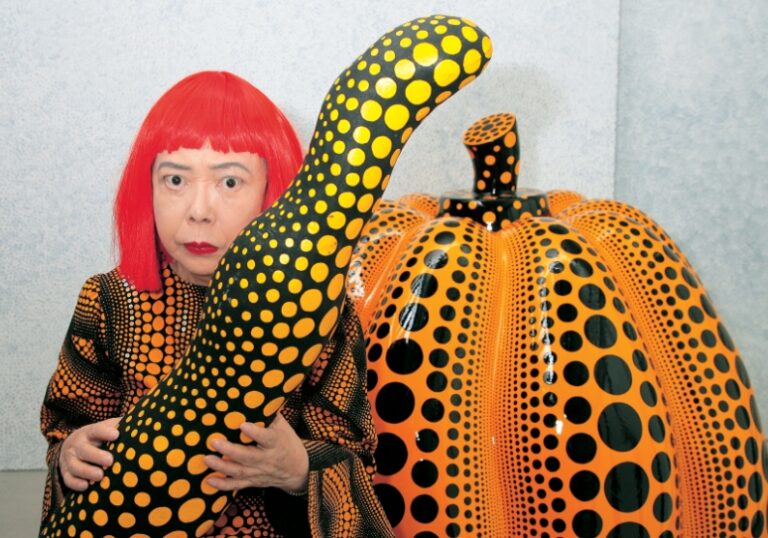
An iconic figure in the world of modern art,Yayoi Kusama's intriguing work has been exhibited globally. Motifs of repetitive "polka dots" and limitlessly expanding "infinity nets" both originated from her childhood visual and auditory hallucinations and are characteristic of her works. Her talents flourished after her move to the U.S. in 1957,producing from her New York studio various works in different genres,making her a heroine of the European and American art scenes in the 1960s. She returned to Japan in 1973,but it was not until 1993,when she was selected as the Japanese representative for Venice Biennale,that she came to be widely recognized and appreciated in her own country. Starting in 1998 and continuing through 1999,a major retrospective exhibition of Kusama’s work toured the world,including the Museum of Modern Art in New York. Also a talented writer,Kusama is vigorous in her pursuit of experimentation with new ideas through spatial art as well as through novels and poetry. In recent years,she has expanded her field of interest to include large outdoor sculptures such as the Visionary Flowers piece that can be found at the Matsumoto City Museum of Art. In October this year,Kusama’s monochrome paintings will be shown as part of an exhibition of her works due to be held in New York.
Biography
The obsessional motifs of repetitive "polka dots" and limitlessly expanding circular pattern "infinity nets" that appear in the paintings and sculptures of Yayoi Kusama originated in childhood illusions,hallucinations,fears and anxiety. She left her hometown of Matsumoto to study at the Kyoto Municipal School of Arts and Crafts,and in 1958 moved to New York. In New York she created monochrome paintings with repetitive patterns,as well as soft sculpture and other innovative forms,including installations using lights and mirrors,and performance art–then known as "Happenings" –and became associated with a group of influential artists that came to define the European and US art scene of the '60s. She was exhibited in New York,Boston,Washington,D.C.,Detroit,and various other cities in the US and Europe. Her work was included in a group exhibition at Wesleyan University,Connecticut in 1964 along with the works of Roy Lichtenstein,Andy Warhol,Jim Dine and Tom Wesselmann. Kusama returned to Japan in 1973,but it was not until 1993,when she was selected as the Japanese representative for the Venice Biennale that she came to be widely noted and appreciated in her own country.
The 1989-90 Yayoi Kusama: A Retrospective exhibition for the Center for International Contemporary Arts in New York established appreciation of her work outside of Japan. Kusama has explored work in 3-dimensional form and is active as both a painter and a sculptor. Her early airmail-sticker collages,egg carton reliefs,and phallus-covered objects are considered significant in the history of American Pop Art and Post-Minimalist abstraction. Although she approaches her work from a completely different vantage point,critics have compared her to post-Abstract Expressionist avant-garde artists such as Donald Judd,Frank Stella,Robert Ryman and Ellsworth Kelly. Her Infinity Nets series are seen to share certain aspects of the American Minimalism movement that began in the early '60s,and with European avant-garde art of the same time.
In 1998 a large solo exhibition of Kusama’s Love Forever: Yayoi Kusama 1958-1968 was curated in partnership between the Los Angeles County Museum of Art and The Museum of Modern Art,New York. It toured at the Walker Art Center,Minneapolis,and the Museum of Contemporary Art,Tokyo. Recent major exhibitions include the Kusama Yayoi exhibition that toured France in 2002 and the 2004 KUSAMATRIX: Yayoi Kusama organized by the Mori Art Museum,Tokyo and the Museum of Contemporary Art,Sapporo.
Chronology
-
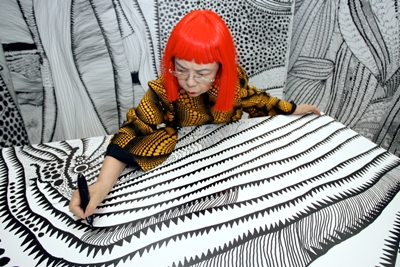
Kusama Yayoi at her studio in Tokyo
-
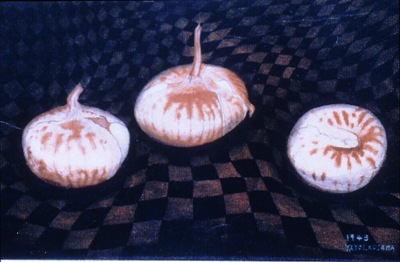
Onions, 1948 35.9×59cm
-
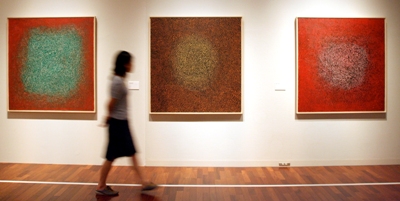
Infinity Net A, B, C, 1965, at Matsumoto City Museum of Art
-
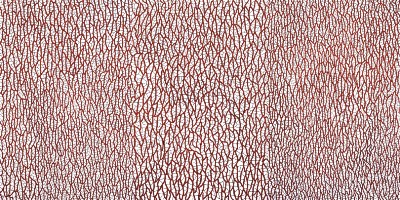
The Milky Way, 1991-92
-
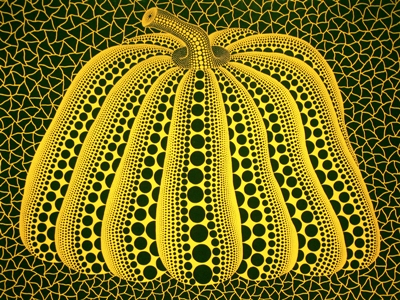
A Pumpkin, 1999
-
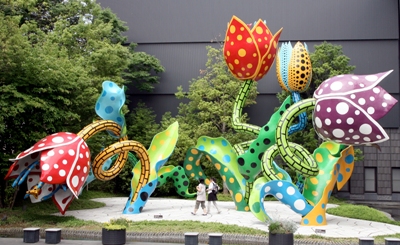
The Visionary Flowers, Matsumoto City Museum of Art, 2002

